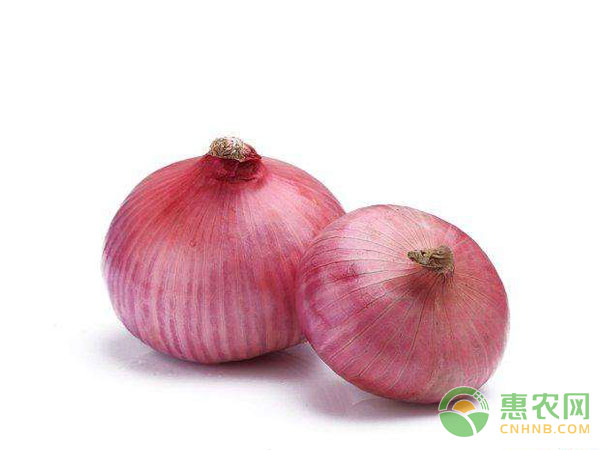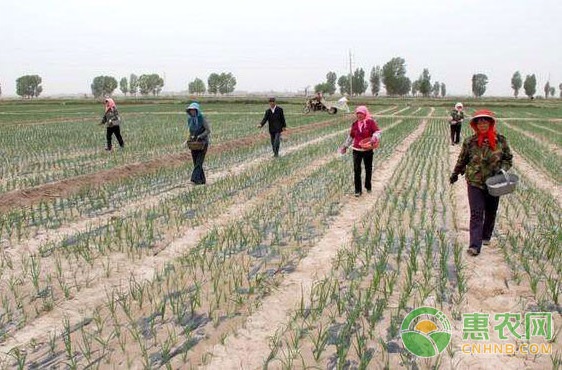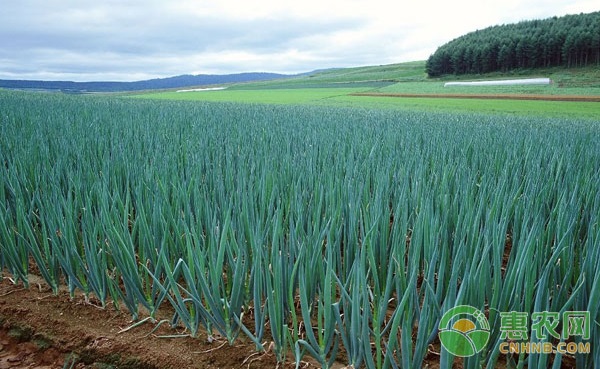The cultivation of onions is strictly seasonal. The main producing areas of onions in China, especially the export products base, are concentrated in the middle latitudes. Most of these areas adopt the wintering cultivation method of autumn broadcast, and can also be used for nursery in early spring and spring harvest in spring. . The following Hui Nong network Xiaobian introduces the onion formula fertilization technology for everyone.

1. Growth conditions of onions
The growth temperature of onion is 12~26°C, and the seedlings have strong cold resistance and can withstand the low temperature of -6~-7°C. The optimal temperature range of bulbs during rapid expansion is 20-26 °C, which is beneficial to the formation of bulbs under long-day conditions.
Onion roots are shallow, water absorption is weak, and high soil moisture is required. Its underground part is more resistant to dryness, and the relative humidity of the air is 60% to 70%. It has high requirements on soil solution concentration and is a type of fertilizer. It is suitable for cultivation on neutral soil with fertility, looseness, water retention and fertility.
2. Fertilizer characteristics of onion growth
The leaves are onions assimilated organs, and the bulbs are storage organs, so the growth of leaves has a great influence on the quality and yield of onion. The onion needs less fertilizer at the seedling stage, and as the development of the aboveground part accelerates, the amount of fertilizer needed increases sharply.
When the bulb begins to expand, the nutrients will concentrate on the onion and the color of the leaves will gradually fade. From the perspective of various nutrients, potassium is most absorbed, followed by nitrogen, calcium and phosphorus. In the bulbs that store nutrients, the elemental content is the order of nitrogen, potassium, phosphorus, and calcium.
The onion roots began to grow when the average temperature of the 10 cm soil layer reached 5 °C, and the root activity began to flourish at 10-15 °C. From the point of view of nutrient absorption, the winter absorption is very small, and it will increase after the spring of March of the following year. Later, as the plant grows gradually, the amount of fertilizer absorption increases accordingly.

3. Nutritional diagnosis of onions
Nitrogen deficiency: the leaves are light green and poorly grown.
Phosphorus deficiency: poor growth, no special symptoms on the leaves.
Potassium deficiency: A white to brown dead spot between the veins of the old leaves, similar to the lesions such as downy mildew, should be noted.
Calcium deficiency: a wide, irregularly shaped white dead spot on the top or middle of the new leaf. Heart rot occurs in the middle of the bulb.
Boron deficiency: the growth and development of new leaves is blocked, the leaves are easily deformed and lose the green color they should have.
Sulfur deficiency: the leaves of the new leaves are light.
Magnesium deficiency: light green to yellow between veins.
4. Onion fertilization technology
The onion nursery bed should apply the base fertilizer and choose loose and fertile soil with strong water retention. For example, when the nursery nursery is 11 square meters, the application amount of the decomposed organic fertilizer should be 25-30 kg, and then the application of phosphorus pentoxide 0.08-0.15. Kg; seedling stage can be combined with watering to apply manure fertilizer 17 ~ 20kg, or topdressing nitrogen fertilizer 0.09 ~ 0.12kg to promote seedling growth.
The seedlings are planted in the field 15 to 18 cm before planting to form an advantageous environment for onion fertilizer. The amount of organic fertilizer is about 20-40 tons per hectare, and 450-600 kg of plant ash is needed for acidic soil. In addition, if the phosphate fertilizer is insufficient, 55-90 kg of phosphorus pentoxide is needed.
After the onion is slowed down, it will enter the development stage of stems and leaves. In order to promote the good growth of stems and leaves, it is necessary to apply the first fertilizer, and apply 15 to 19 tons of manure per hectare, or 30 to 45 kg of nitrogen fertilizer.
The so-called "promoting head fertilizer" is to topdress 2-3 times in the bulb expansion period, applying 45 to 60 kg of nitrogen fertilizer per hectare. The method of applying inorganic fertilizer can be applied in the seedling hour, and then watered immediately, without delay.
After the plants grow up, they must do a good job in water and fertilizer management. 30 to 50 days after planting, that is, when the bulbs begin to transfer into the rapid expansion period, the effect of increasing onion is significant for the key topdressing time. When topdressing, it is necessary to pay attention to quantity and quality, and also pay attention to the appropriate period of topdressing.
If the key fertilization time is too late, the bulb will not be adequately nutritious when it is swollen rapidly, and the maturity period will not be transferred to dormancy in time, which will affect the yield of onion and is not conducive to storage; if the key topdressing is too early, the ground leaves are easy to grow and grow. Not conducive to the expansion of the bulb.

The above is the introduction of how to apply onion formula fertilization, I hope to help everyone grow high yields of onions. Hui Nongwang Xiaobian warmly reminded that onions can also be intercropped with economic crops such as peanuts. It is a good crop for farmers to adjust the planting structure, increase the multiple cropping index and increase income.
The nasopharyngeal airway, made of PVC also known as or nose hose, a type of airway adjunct, is a tube that is designed to be inserted into the nasal passageway to secure an open airway. When a patient becomes unconscious, the muscles in the jaw commonly relax and can allow the tongue to slide back and obstruct the airway. This makes airway management necessary. The purpose of the flared end is to prevent the device from becoming lost inside the patient's nose.
Features&Benefit
Type: Horn open, with connector, Silicone reinforced
Nasopharyngeal airway is made of medical grade PVC.
Available with DEHP FREE.
For nasal airway management.
Available with FDA, ISO certificates.
The tube is smooth and easy to be inserted into the nasal cavity
Available Size:4.0mm-9.0mm
Sterile with Ethylene Oxide (EO)
Nasopharyngeal Airway,Medical Nasal Airway,Artificial Nose Airway,Nasal Pharyngeal Airway
Hangzhou Trifanz Medical Device Co., Ltd , https://www.cfzmeds.com